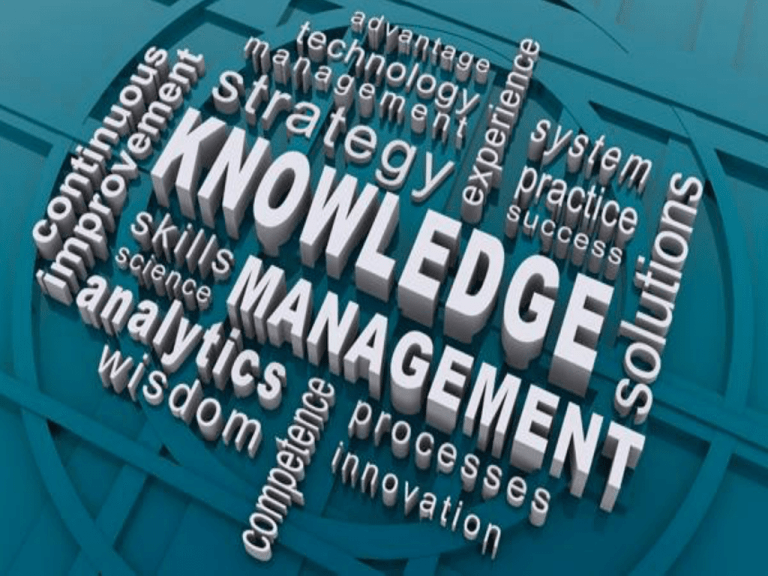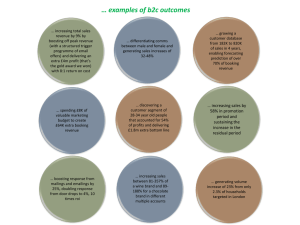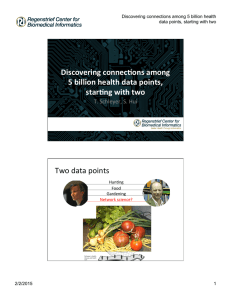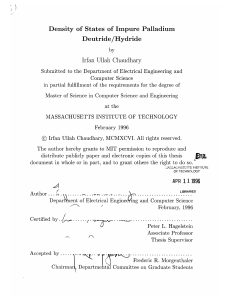Knowledge Management - NASC Document Management System
advertisement

Forethought Knowledge is our most important engine of production – Alfred Marshal Knowledge is the key resource of the 21st century Problem today is not how to find information but how to handle it! Outline Concept of Knowledge Management (KM) Forces Driving KM KM Systems Impact of KM KM Tools and Use of ICT in KM Picture Exercise What comes in your mind while talking about Knowledge Management? Please create a PICTURE/DIAGRAM within 5 minutes that shows your understanding on ‘Knowledge Management’. Each individual will get 1 minute for drawing Succeeding individuals should build on the concept already drawn Executives are requested NOT TO communicate while drawing Share learning in plenary 4 Knowledge Tacit Explicit Subjective, cognitive, Objective, rational, Highly personalized Policies, goals, experiential learning Difficult to formalize Sticky knowledge technical strategies, papers, reports Codified Leaky knowledge Knowledge Continuum Data = collection of facts, measurements, statistics Information = organized data Knowledge = contextual, relevant, actionable information Knowledge Management Process to help organization identify, select, organize, disseminate, transfer information Systematic and active management of ideas, information, and knowledge residing within organization’s employees Leverage value of intellectual capital through reuse Reflect from the Case Watch the video Note key points in your notebook that relates the: Driving forces for KM KM processes/systems Results of KM in the given context Share in plenary Driving Forces for KM Increasing Domain Complexity Accelerating Market Volatility Intensified Speed of Responsiveness Diminishing Individual Experiences The KM Systems Impact of KM People • Employee Learning • Employee Adaptability • Job Satisfaction Process • Process Effectiveness • Process Efficiency • Process Innovation Products • Value added products • Knowledge based products Organizational Performance • Return on Investment • Economies of Scale and Scope • Sustainable competitive advantage KM Techniques Brainstorming Story Telling Knowledge Mapping Communities of Practice (CoP) After Action Review (AAR) Exit Interview Knowledge Fair Yellow Pages Lesson Learned and Best Practices KM Tools and ICT Infrastructure: groupware, intranets, document management, KM suites Thinking: concept mapping, creativity tools, AI Gathering, discovering: search engines, data mining, intelligent agents KM Tools and ICT Organizing, storing: data warehousing, OLAP, metadata, XML Knowledge worker support: case based reasoning, decision support, workflow, community support, simulation Application specific: CRM, expertise profiling, competitive intelligence KM Systems in practice 1. Enterprise-wide knowledge management systems General-purpose firm-wide efforts to collect, store, distribute, and apply digital content and knowledge 2. Knowledge work systems (KWS) Specialized systems built for engineers, scientists, other knowledge workers charged with discovering and creating new knowledge 3. Intelligent techniques Diverse group of techniques such as data mining used for various goals: discovering knowledge, distilling knowledge, discovering optimal solutions Content Management Network Management a database of firm experts, as well as accepted solutions to known problems facilitates the communication between employees looking for knowledge and experts who have that knowledge. KM Work System Case based reasoning • Represents knowledge as a database of past cases and their solutions. Learning organization & KM People continually expand their capacity to create the results they truly desire New and expansive patterns of thinking are nurtured Collective aspiration is set free People are continually learning how to learn together KM is the foundation of learning organization Barriers to KM Implementation Lack of Need 5% Barriers to KM Costs 12% Immaturity of User Groups 16% Immaturity of Technology 19% Cultural Resistance 48% To Sum Up Knowledge controls access to opportunity and advancement KM is creation, sharing and utilization of Knowledge systematically An integral part of every knowledge worker’s daily responsibilities Various tools can be used for managing knowledge assets Use of ICT is important for KM implementation Basanta Raj Sigdel NASC Tel. 5522160 Ext. 275 Cell: 9841310840 Email: brsigdel@nasc.org.np





